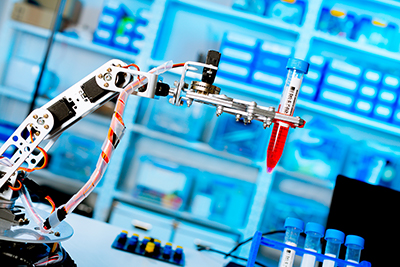When the concept of robotics first emerged, the idea of creating machines that could mimic human movement seemed almost fantastical. Fast forward to today, and robots have not only become more advanced but also found their way into countless industries, from automotive to electronics. What’s particularly fascinating is how much emphasis has been placed on improving their precision—especially in tasks that require a delicate touch. Imagine trying to recreate the dexterity of the human hand or arm—a feat that seems simple at first glance but becomes infinitely complex once you consider all the nuances involved. A human arm can move fluidly across multiple axes, adjusting force and speed effortlessly. It’s this adaptability that makes human actions so seamless and precise. Early robotic arms struggled to achieve similar levels of versatility. They were often limited to basic tasks like spot welding, where precision wasn’t necessarily paramount. If the arm reached its destination and completed the task, the job was considered done. However, as industries demanded more intricate work, such as continuous welding along seams, the limitations of these early robots became apparent. Spot welding didn’t require the same level of finesse as continuous welding, where every millimeter counts. Manufacturers responded by developing more sophisticated systems, including the introduction of six-axis robot arms. These innovations allowed for greater flexibility and control, enabling robots to perform tasks with unprecedented accuracy. But hardware alone wasn’t enough. The development of advanced software played an equally critical role in enhancing robotic precision. Engineers now have tools at their disposal that allow them to program robots with incredible detail, ensuring that each movement aligns perfectly with the intended outcome. This level of customization has opened doors to new possibilities in manufacturing and beyond. One area where these advancements shine brightest is welding. For instance, creating a perfect continuous weld demands a high degree of precision. Speed, position, acceleration, deceleration, and even the type of welding material used—all need to be meticulously calculated. Robots equipped with the right programming can execute these tasks with remarkable consistency, reducing cycle times and boosting overall efficiency. Take Genesis Systems, for example. They’ve pioneered robotic integration solutions that significantly reduce cycle times while increasing profitability. Their approach highlights how far we’ve come in leveraging robotics to meet modern industrial demands. In conclusion, the evolution of robotic precision hasn’t just transformed manufacturing—it’s reshaped entire industries. By pushing boundaries and refining both hardware and software, we’ve created tools capable of performing tasks once thought impossible. And as technology continues to evolve, there’s no telling what new frontiers robots will help us explore next. Stainless Steel Dutch Wire Mesh Stainless steel dutch mesh can be customized in terms of wire diameter, mesh size (number of openings per linear inch), and overall dimensions to meet specific application requirements. if you have any inquiry, please contact with us. stainless steel dutch wire mesh, Dutch Weave,Plain Dutch Weave,Dutch Weave Wire Mesh, hardware dutch wire mesh SHENZHOU SHUANGYOU MESH CO.,LTD. , https://www.firstwiremesh.comFrom Spot Welds to Continuous Seams: The Evolution of Robotic Precision

The Journey Toward Precision
Software: The Game-Changer
Applications in Welding
Stainless steel dutch mesh have below features:
1. Corrosion Resistance: Stainless steel is highly resistant to corrosion, making it ideal for use in environments with high moisture content or exposure to chemicals.
2. High Strength: Stainless steel has excellent strength properties, which makes the mesh durable and capable of handling high pressures.
3. Flexibility: Depending on its weave, stainless steel mesh can be flexible enough for certain applications while still maintaining structural integrity.
4. Temperature Resistance: Stainless steel can withstand high temperatures without losing its properties, making it suitable for applications involving heat.
5. Cleanliness: Stainless steel meshes are often used in applications where cleanliness is critical, such as food processing or pharmaceutical manufacturing.
The Stainless Steel Filter Mesh have widly uses:
1. Industrial Filtration: Used in oil, gas, and chemical industries for filtering out impurities from liquids and gases.
2. Food Industry: Filters in cheese production, wine, beer, and juice purification.
3. Water Treatment: Removes contaminants from water in industrial processes or residential water filtration systems.
4. Aerospace: Filters for air intake in aircraft engines.
5. Medical Devices: Used in medical equipment filters to ensure the purity of fluids or gases.
6. Environmental Protection:Filters for air and water purification systems.
7. Automotive: Fuel filters in vehicles.
8. Electronics:Filtration in semiconductor manufacturing processes.
Accoding to the wave pattern, the stainless steel dutch mesh divide into plain weave dutch mesh, twill weave dutch mesh ect
I
Stainless steel dutch mesh is a versatile and durable material that's used in various industries for filtration purposes. It's made from stainless steel wires that are woven or knitted together to form a fabric-like structure. The mesh can be customized in terms of size, shape, and density to suit different applications.